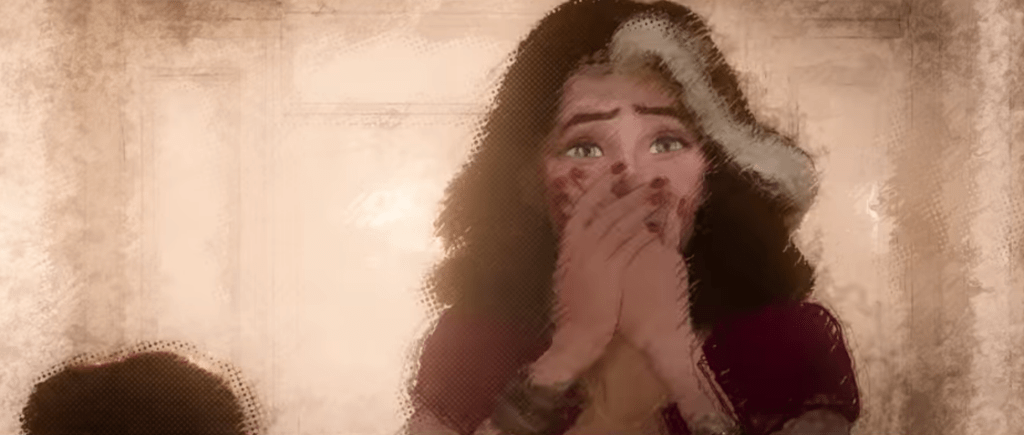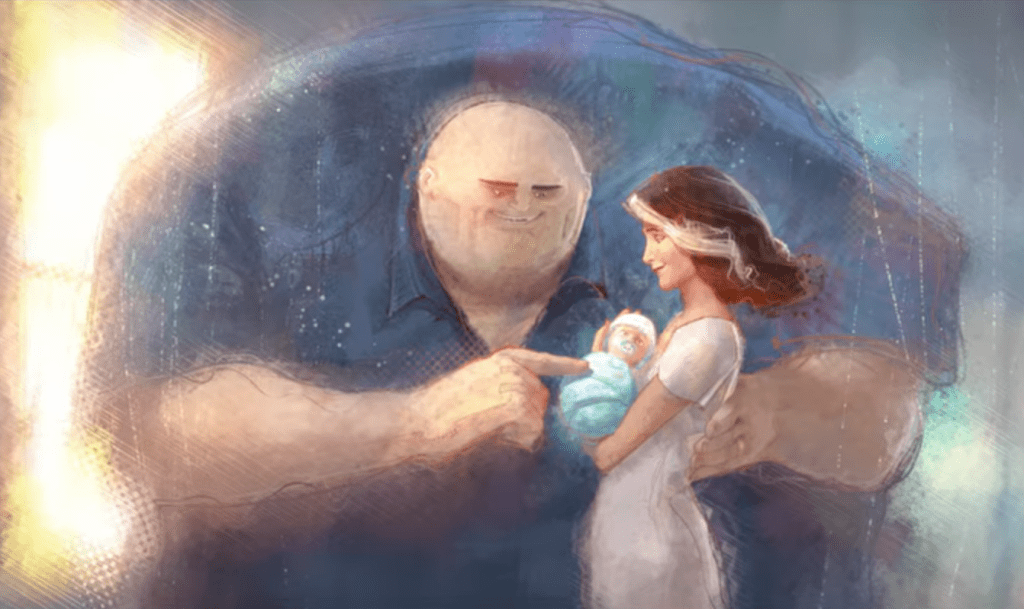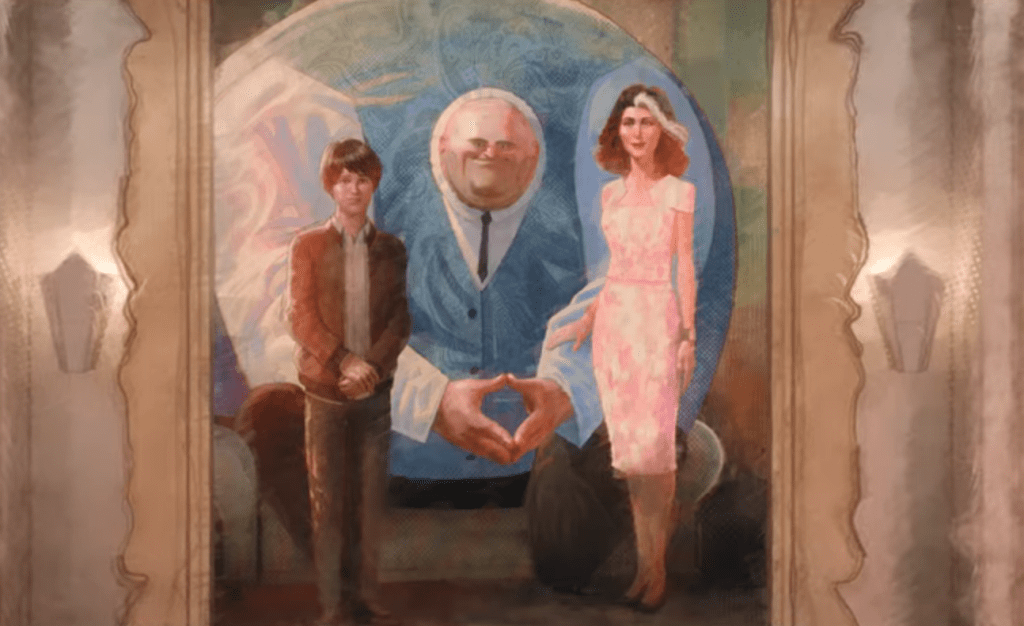Escape Room Narrative: What Spiderverse Can Teach Us About Intro Videos
So two weeks ago I finally saw Spider-Man: Into the Spiderverse. Yes, I know. I’m more than slightly late to the game here. Part of it was intimidation of my Marvel fan friends (they can be intense). Part of it was my fatigue with Marvel and Spider-Man movies in general. A very small and petulant part of me simply didn’t want to get on the hype train. Whatever the reason, the important thing is that I saw it!
And I. Am. OBSESSED.

Yes, the hype was real. Despite knowing only the very basics of Spider-Man, I was still in love with this movie. And there is a lot to love. The ground-breaking animation, the engaging characters, the humour, the heart, everything was almost pitch perfect in execution.
But there was one scene in particular that caught my eye. And I’m not talking about the “What’s Up Danger” sequence…although that is an incredible sequence, and it definitely took my breath away and I may or may not have that song on my jogging playlist now so that I too can feel like a Spider-Person while I huff and wheeze my way down the street.

No, the scene I am talking about comes almost exactly one hour into the movie. It lasts approximately thirty-five seconds. And it is an excellent example of what we could be doing with our escape room intro videos.
I am talking about the Kingpin backstory reveal. Spoilers ahead for…well…a very tropey backstory, I guess…
For those not familiar, Kingpin is the big bad of Spider-Man.
This scene is a near perfect demonstration of how escape rooms can be more efficient in their intro videos.
Okay, rewinding a bit. Escape Room intros have always been a bit of a beast to conquer. Narratively speaking, there is very little time for exposition. Most escape rooms begin at the inciting incident, meaning the players do not get the normal time a character would get to be eased into the world before the adventure begins. To make up for this, escape room designers have to fill in that gap as quickly as possible. In the early days, the bulk of this was reading some sort of info dumping monologue from a single piece of paper or, if we were really lucky, a video.
I’ve talked about this previously and have marveled in recent years at some of the advancements in the pre-game experience. If I had my way, every single escape room would have some insane, elaborate pre-game experience that fully immerses us into a world and primes us for the adventure of a lifetime.
But we live in the real world. And in the real world, a small business cannot afford to spend all of their game time slowly immersing the players into their game. They need something cheaper and quicker.
Enter the escape room intro vid. It is a staple of escape rooms and, if escape rooms survive the ramifications of the pandemic, will be a staple for smaller escape rooms for years to come.
The escape room intro video can consist of two portions: The first might be the generic “Please don’t climb on the bookshelf” safety warnings. The second is digging into the actual meat of the game. This can include backstory and providing the main goal for the players.
It is in the second portion that escape rooms have really struggled over the years. The typical intro vid can run between two and five minutes long. Even two minutes tends to make a player’s eyes glaze over. But there is a lot of backstory to get across. How on earth do you limit the video’s length while still getting important information across?
Which brings me back to Into the Spiderverse.
Being me, I have to make disclaimers. It is my thing. First, I recognize that Into the Spiderverse had a very large budget, a budget which even mid-tier escape rooms cannot hope to meet. Second, I also realize that this sequence comes after the character of the Kingpin has already been introduced. It is providing context for a character we already know, rather than introducing them outright.
However, it still has value. In my opinion, if this sequence were to be watched without any of the preceding scenes as context, the audience would still largely be able to understand what was going on and the major motivations of Kingpin.
So…now that I have spent close to 750 words introducing this topic, thus making me a hypocrite, let’s dive into this scene, beat by beat. What exactly is conveyed in those 35 seconds of animation?
The first thing we see is Kingpin from behind. There is seemingly nothing relevant there.
It is what we initially hear, though, that is important. A pen click. This is confirmed by a shot of his face, lined with stress, breathing uneasily…
Followed by his hand clicking a ball point pen.

Within those ten seconds, what does this tell us about the character? The framing shows he is an imposing person, but the closeups show some vulnerability. There is the obvious stress showing on his face, but the pen click is the true giveaway. This is a nervous tick. His emotional distress is being funneled into fidgeting with this tiny object.
We also establish the tone. The combination of imagery, music, and acting let’s us know that what we are about to see probably won’t be happy.
With each pen click, an image from Kingpin’s past flashes before our eyes…a delighted Kingpin welcoming his son into the world…
An enthusiastic father celebrating his child’s birthday…
A slightly more formal family portrait.
Another family portrait. The family members seem okay, but the attire is even more formal, and the family members are physically somewhat more distant. Kingpin’s arms are no longer around his family members. There may be some friction happening in the background, although they still seem content.
This very small montage conveys three things: Kingpin’s love for his family, the passage of time, and a subtle distance growing between them as his criminal dealings grow.
This almost immediately cuts to a fight with Spider-Man himself.
The change in animation style helps to indicate that this is a flashback scene (if it were not already apparent). The pen click continues, now more a punctuation of time running out.
We then see Kingpin, full of rage, gain the upper hand, a far cry from the doting husband and father from the earlier photo montage. He growls out “You’re dead, Spiderman…”
Before he can deliver a finishing blow, though, a shocked voice whispers “Wilson?” (his actual name). He turns around, enraged…
Only to find his wife and son…
Staring…

In horror…

Wilson, equally shocked, utters “Vanessa?”, terrified at the side of himself his family has just witnessed.

Vanessa seems to confirm something in her head, and does not need a second more to think. She takes her son and runs. He yells out her name, pleading, one last time before we see her careening down the street in her car, losing control almost immediately.
Notice the colour palette has shifted from the warm hues of the past to a more blue and ominous palette.

She tries to comfort her frightened son…

And of course does not see the truck crossing the intersection, which promptly t-bones them.

The moment this happens, the music cuts out, and we immediately cut to a close-up of the hand and the pen, only this time the hand crushes the pen, snapping it into pieces.

There is a beat of silence. we see Kingpin again from a distance. He has a cronie with him, but he may as well be alone.

Finally, we see Kingpin’s face again. This time his grief is laced with determination and fury. Whatever he is planning, his motivation is now clear.

In 35 seconds and four very short lines of dialogue, we learn so much. We find out that this man had a family he loved. We know he was in dubious dealings as he not only fights a superhero, but is dead set on killing him with no hesitation. From his family’s reactions, we know he was keeping it from them. We know that the shock and horror of finding out Kingpin’s true nature utlimately led to their deaths. And we know from a single look at Kingpin’s face that he will stop at nothing to try and get them back, or (if you don’t know he’s going to do that) to avenge their deaths.
The backstory is a simple one. A man becomes a criminal, loses his family because of it, and is consumed by their deaths. But that simplicity allows for the audience to more easily identify and empathize with Kingpin’s loss. It also means whatever he does, they fully understand the motivations behind them.
Let’s not forget the sound design and musical score in this sequence. That pen click and musical score help to ramp up the tension and inevitable tragedy of Kingpin’s life, making the silent beat following the sequence all the more potent. Music and sound design do not get nearly enough credit in the gaming world, and they really need to.
It’s next to impossible to take in some of the details I outlined on a first watch. But the execution is so tight that you don’t even realize the connections you are making. No long sequences, no monologues explaining every detail of a character’s backstory, just pure visual and audio storytelling condensed into less than a minute. I was more emotionally invested in those 35 seconds than I have been in any escape room intro vid.
It is videos like these I wish I saw more of before entering an escape room. Imagine this type of sequence before an escape room. Imagine you might be doing a Spider-Man escape (which you probably wouldn’t because, let’s face it, Disney’s minions are listening), and instead of Spider-Man swinging in and explaining your goal, you saw a 40 second video showing the goal instead? Even better, imagine an escape room that could get you to care about a character through an intro video alone.
I am not saying that this sequence should be a shot for shot template that you should use. This sequence was made for a different medium entirely. But when I see people make statements that it’s impossible to get across so much information in less than five minutes, I kind of want to point them to this sequence. I want them to experiment with what they can do.
The next time you are making an intro video for an escape room, keep these things in mind. What does the player need to know. How efficiently can you make your intro vid? Can you make it emotionally impactful as well as convey important information? What does it reveal about the characters? Does it need narration? Could it be done without it? Can you storyboard rather than script?
It is more difficult than it looks. Consider using your budget to get some outside help. Writers, animators, sound designers, editors. These professionals have been trained to tell stories through a visual medium, often in a short amount of time. It may seem like a waste of money, but making a really effective video can prime and fast track the players to a great experience.
In the meantime, the next time you watch a film, or start a television series, really look at how they introduce characters and plot points. What sorts of short hand do they use? How much can you show, not tell? You could tell players that a man was broken up by his family’s death and it still affects him to this day.
Or you could show it. With a simple…focused…pen click.

Posted on June 1, 2021, in escape rooms and tagged escape rooms, into the spiderverse, narrative. Bookmark the permalink. 1 Comment.










Lovedd reading this thank you